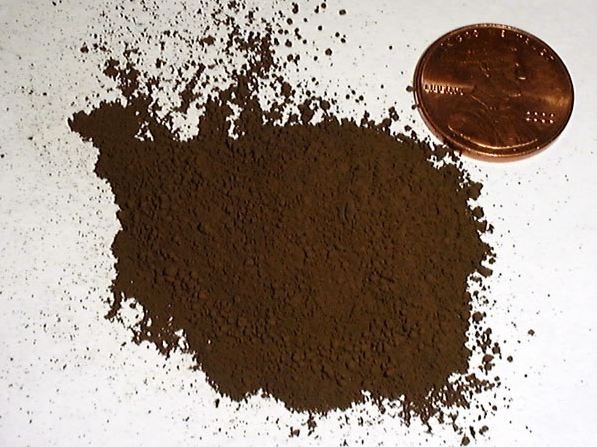Iron oxide is a group of sixteen compounds that are composed of oxygen and iron atoms. If you are not much familiar with the name, perhaps you’ll recognize it on its most common term, which is “rust.” Yes, the rust that forms in a metallic object when it is exposed to water for a long period of time is one of the naturally occurring forms of this mineral. Iron oxides have excellent light stability and are opaque. However, black and yellow iron oxides tend to be sensitive to high temperatures. Aside from its several biological and geological functions they play in nature, iron oxides are also broadly used in food, pharmaceutical, beauty, as well as in electronics industry.
Furthermore, this mineral has been used in the cosmetic industry as early as the 1900s as colorants. They were also the pigments that were used in order to match the skin tones in most cosmetic products. The iron oxides are most commonly found in hair dyes, face powders, lipsticks, eyeshadows, mascaras, eyeliners, blushes, and bronzers. Interestingly, the rust’s brownish or deep red shade is what gives the blood-red lipstick you see in a cosmetic shop.
The compounds of the iron oxides are created in a process called oxidation. The minerals that were made in the said process produces a variety of earthy shades and tones, aside from your usual shade of browns and reds. Did you know that these compounds of iron oxides can also have colorful fine powders like yellow, orange, and even black? Yes, they do! In fact, these powders were classified into three color groups, colcothar (Cl 77491), black (Cl 77499), and yellow iron oxides (Cl 77492).
One of the main reasons why the iron oxide compound is widely used in beauty products like makeup is that they give these products an intense and rich color. Another probable cause is their ‘staying power.’ These minerals were surprisingly resistant to moisture and tended to stay longer on the skin. In short, these products that have iron oxides do not easily smear or bleed. These compound minerals are also considered safe because of their non-allergenic and non-toxic characteristics. In fact, iron oxides are well tolerated even by those who have sensitive skin.
How Safe is it to use Products that have Iron Oxide?
As was aforementioned, iron oxides are compound minerals that occur naturally in nature. With that being said, iron oxides are a hundred percent natural. On the contrary, this mineral that occurs in an uncontrolled setting could have a trace of heavy metals like cadmium, arsenic, and most dangerously, mercury. These elements are too dangerous to be one of the ingredients in making a cosmetic product for the reason that they are harmful to the body. This is why the iron oxides that were used in cosmetic formulas were mostly produced synthetically since the synthetic version is actually much safer than the natural ones.
The term synthetic is most usually associated with something that is harmful or bad. However, in this case, the synthetic ingredient is produced in a laboratory for some safety reasons. The controlled manufacturing of the iron oxide mineral is necessary to avoid the inclusion of impurities that may naturally occur in iron oxides. Although it is synthetically produced, its basic composition still remains. In doing this, scientists recreate the natural process of oxidation in a controlled environment. With that, this iron oxide will be free from harmful heavy metals and ingredients. After the oxidation, these synthetic iron oxides are now purified and free of irritants or other undesirable compounds.
The pigments of iron oxide in topical beauty products are unmatched when it comes to durability and pigmentation. However, one disadvantaged is that it cannot be placed beneath the dermis of the skin, like how it is in the process of permanent makeup or tattooing. The main reason is that, when placed under the skin, the iron oxide will be gradually absorbed by the blood vessels, which may result in changing the color of the blood.


